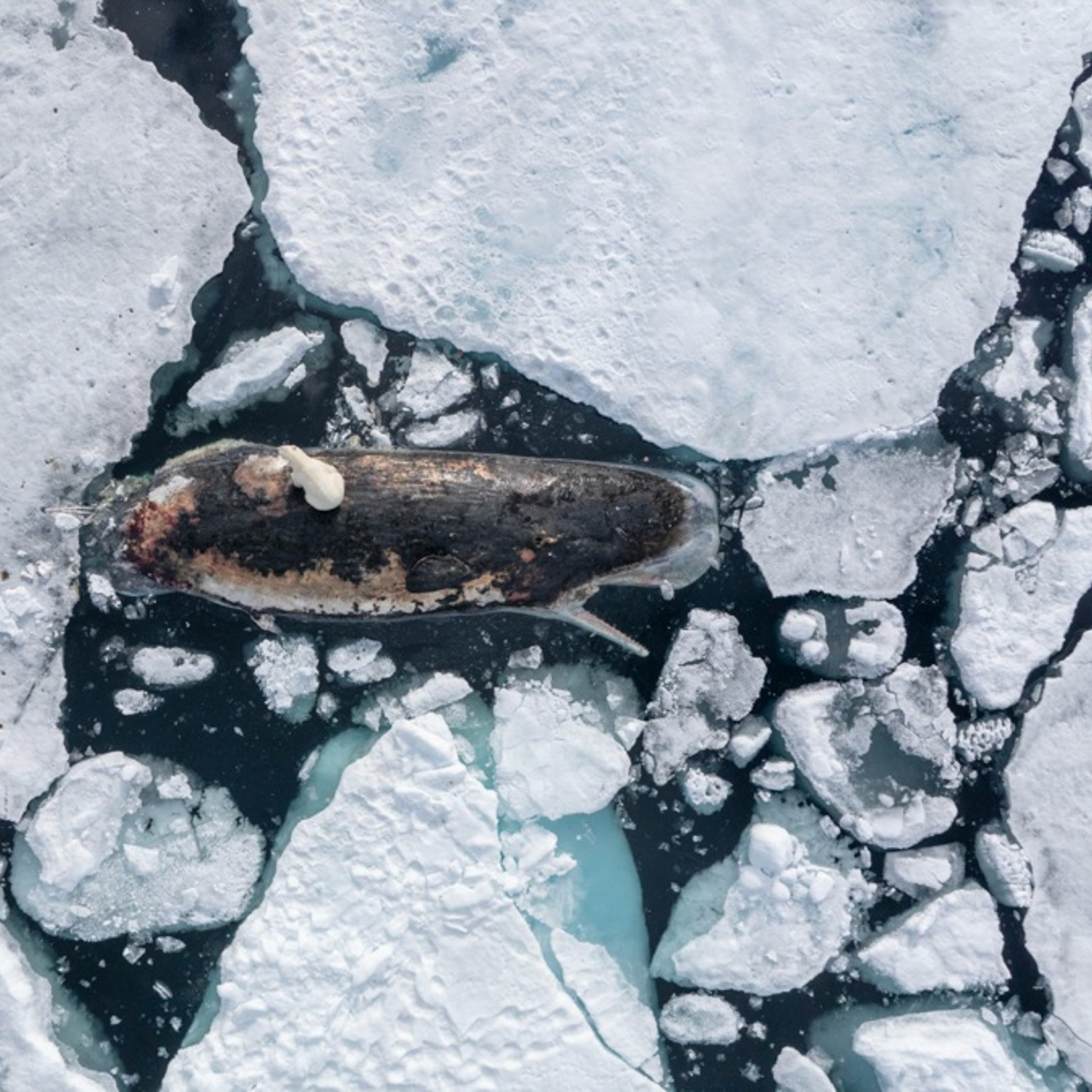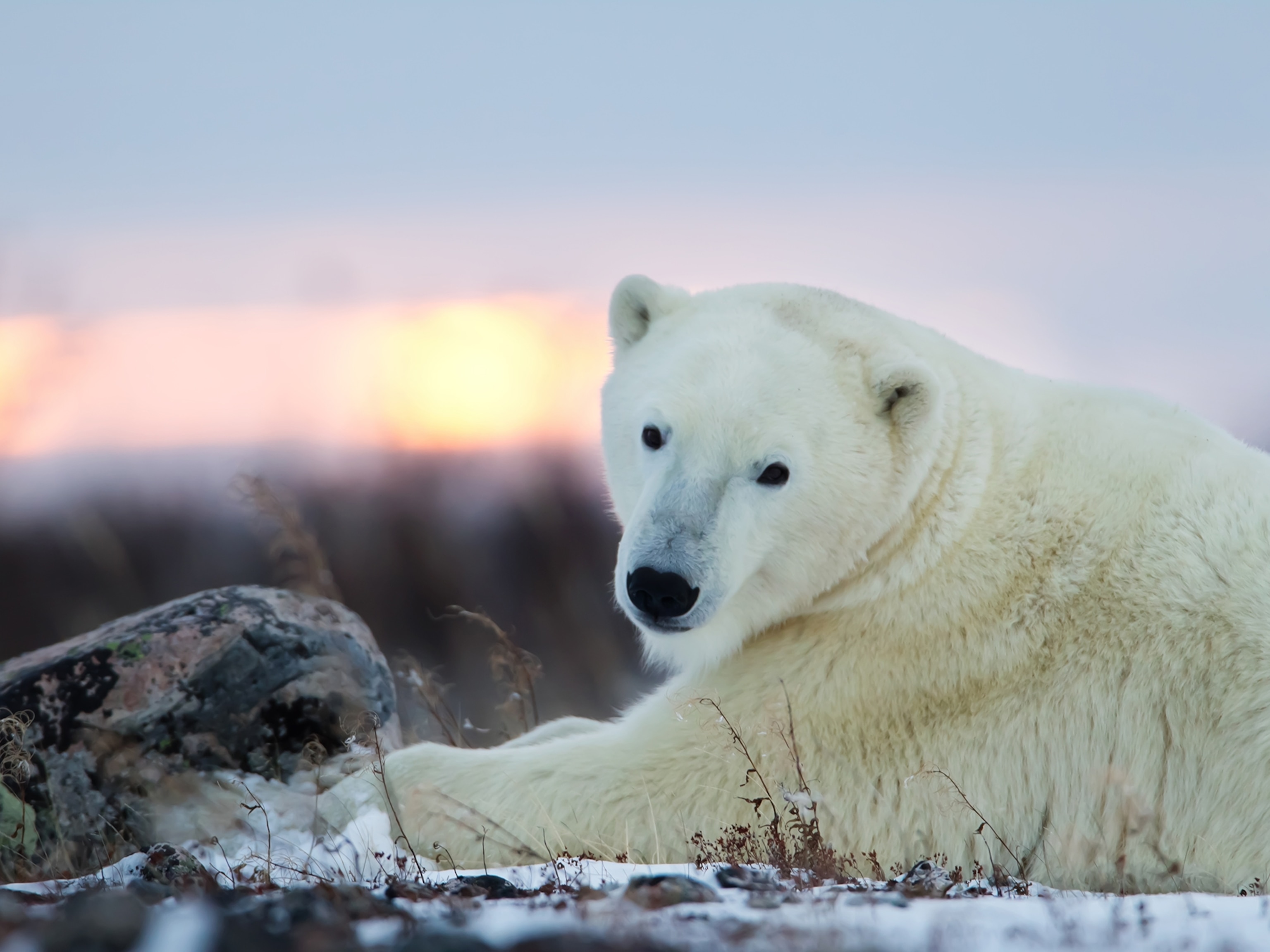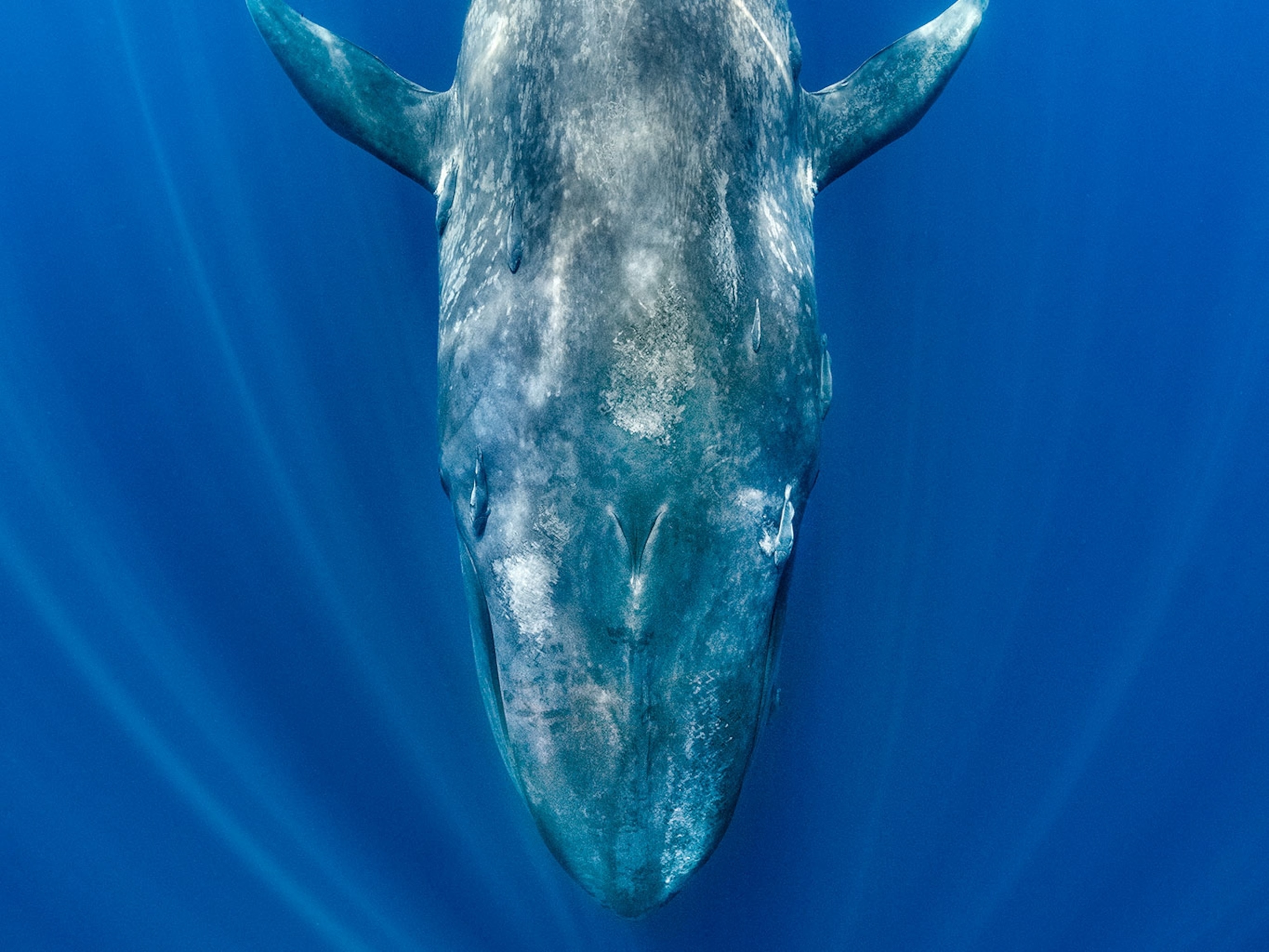
Whale meat helped polar bears survive past warming
But chowing on whale carcasses today won't prevent an extinction crisis. Only saving sea ice will.
The risks to polar bears on our rapidly warming planet is clear: Ursus maritimus treks across Arctic sea ice, which it uses as a platform to hunt fatty seals, typically ringed seals. But climate change is freezing Arctic Ocean sea ice later and melting it sooner.
In all but two of the Arctic's 19 polar bear subpopulations, sea ice cover dropped 7 to 19 days per decade from 1979 to 2014. In the Beaufort Sea region, where sea ice now lasts roughly 36 days a year less than it did in the 1990s, scientists found bears spent 31 more days on land—far from their ice-dependent prey. With less sea ice, some bears are growing smaller, having fewer cubs, and not living as long.
Scientists have long predicted that threat will get worse as sea ice continues its stark decline. That's why polar bears are protected under the Endangered Species Act.
But since these high Arctic predators split off from brown bears 152,000 years ago or more, polar bears clearly made it through some significant warm eras. So how did these predators survive? Perhaps more importantly, could they do so again?
The answer, according to a new study published Tuesday by University of Washington polar bear scientist Kristin Laidre and several colleagues in Frontiers in Ecology and the Environment, is that these massive white hunters almost certainly became better scavengers, feasting more often on the carcasses of far bigger marine mammals than seals: whales.
Large, dead whales regularly wash up on some Arctic coastlines, and that probably was enough to help polar bears through previous interglacial periods, Laidre showed.
Unfortunately, that option might not prove successful again.
"On a global scale, large whale strandings are just not likely to save polar bears from effects of sea ice loss," she said.
And we have only ourselves to blame.
From feast to fast
Polar bears, unlike their land-based cousins, are finicky. Brown bears may slurp up fatty salmon, but also eat berries and insects. Polar bears need lots of fat to survive, and may nab the occasional narwhal or beluga. But mostly they depend entirely on seals, and may eat more than six and half of them a month. It's what they do best.
Writer Stephen Leahy described their ritual earlier this year in National Geographic. Bears will wait "for hours by seals’ cone-shaped breathing holes in the sea ice. When a seal surfaces to breathe the bear stands on its hind legs and smacks it on the head with both of its front paws to stun it. Then the bear bites it on the neck and drags it onto the ice."
But polar bears are also, Laidre says, remarkable fasters. Females can go as long as eight months without eating anything at all—even while giving birth to and nursing young. So they gorge while they can and store the rest.
And with bears spending more time on land, they can be found gorging on the bodies of dead gray whales or bowheads.
"Large whales are massive parcels of fat and protein, the largest parcels of organic matter in the ocean," she says. "If you're a bear stranded on a beach waiting for the ice to freeze up and have access to a large whale that washes up, that could be very important."
Consider: Half or more of a whale's body mass consists of blubber and meat. A gray whale can provide a bear as much nutrition as 420 ringed seals. The nutritional value of a dead bowhead is closer to 1,300 seals.
In other words, if 1,000 bears ate a typical spring diet for 120 days, they would eat 26,400 seals, Laidre's team determined. Or they could just eat 20 bowheads.
So Laidre and her colleagues set out to find out how possible it is—and was—for polar bears to turn their ravenous appetite on whales.
It turns out, it is now probably harder than it used to be, though it may not ever have been easy.
Are there enough dead whales?
The team reviewed previous research, surveys, and notes of observations in areas where polar bears seem to feed most regularly on whale carcasses, primarily along the Chukchi Sea near Chukotka, in the Russian Far East, and in Norway's Svalbard archipelago. In both places winds, ocean currents, and beach topography are such that bowhead and gray carcasses dying of natural causes wash up regularly, with documented cases of polar bear feedings stretching back over decades.
"In some areas, these carcasses appear fairly regularly and are a somewhat predictable food source," Laidre says.
But in other places, such as the rocky coast of Greenland, access to whale carcasses is limited. Carcasses also may not appear regularly in many areas.
More importantly, whales are a mere fraction of what they are believed to have been before commercial harvest by humans. While globally some populations have rebounded, industry and shipping help keep whale numbers low.
"We know that historically, large whale populations were much larger than they are today," Laidre says. So while whales likely helped polar bears squeak through previous warm periods, there is little to suggest that could happen again.
Todd Atwood, a polar bear biologist in Alaska with the U.S. Geological Survey, who was not part of the study, agrees.
"A lot of what polar bear biologists are struggling with is trying to understand the extent to which bears might have dietary flexibility," he says. "This gives us an idea of what potential energetic benefits bears might be getting in the absence of ringed seals."
These days, in areas where subsistence hunters still kill bowhead whales, bone piles often attract polar bears.
"It is in effect a human-provisioned marine subsidy," he says. "It is providing polar bears routine access to bowhead whales that they wouldn't have otherwise."
But of course much of the fat and meat from those whales has already been removed. And the message from Laidre's research is that "it is kind of a bandaid unless you are also able to do something about the loss of sea ice," Atwood says.
Laidre put it even more bluntly: "If you want polar bears around we need sea ice, and loss of sea ice closely tied to our activities and our fossil fuel emissions." (Learn about the IPCC’s dire new climate report.)




















